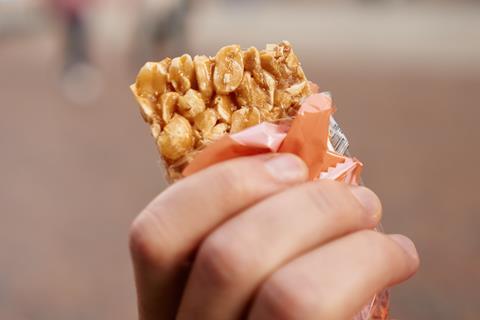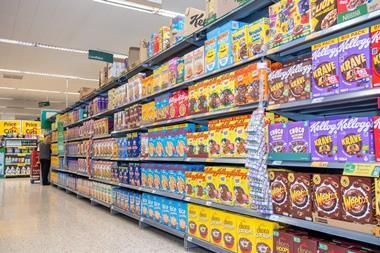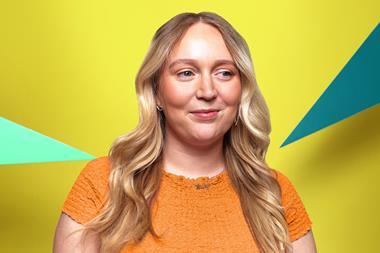
As a young person trying to navigate my local food environment, I really believe it should be easy to be healthy – but it isn’t.
We all know there’s a big challenge around children’s health in this country. We’ve heard the stats – one in three young people in the UK are at risk of obesity. So what does that reality look like for a young person like me? It’s obvious the food system plays a huge role. I honestly feel like food and drink companies bombard me with marketing and suggest their products are healthier than they really are.
Here’s a quick story to explain what I mean. When I was at a training event recently, we had a healthy-looking fizzy drink. The packaging was super bright, had lots of different colours and was made to resemble the drink’s fruit flavours. Yet look closer, and it contained 20g (or five teaspoons) of sugar.
Health halo marketing misled me to believe I was drinking a healthy and nutritious drink when, in actual fact, 67% of my daily allowance for free sugars was gone. I drank two of those back-to-back because I thought they were healthy, when I may as well have had a Coke.
That’s just my story, but I know it’s affecting my friends too. Other young people are being misled in the same way, by claims like “no added sugar” and “high in fibre”, while the high sugar content and other truths stay hidden on the back of packaging. And that isn’t fair. So with Bite Back 2030, Livity and Action on Sugar we did some research that reveals just how difficult brands are making it for young people (and shoppers more generally) to understand exactly what it is they are eating.
Our survey found three in four young people think their diet is healthy, even though our intake of sugar, fruit & veg and fibre is nowhere near public health guidelines. When we mapped what young people thought they were eating versus the nutritional reality of those products, we were shocked.
For example, almost nine in 10 young people think smoothies are healthy, but 76% of juices and smoothies would get a red traffic light label. Eight in 10 young people believe cereal bars are healthy, but 81% would get a red traffic light label. And nine in 10 young people think yoghurts are healthy, but 35% of the flavoured yoghurts people are eating would get a red traffic light. In fact, over half (57%) of all products carrying a health or nutrition claim that our partners Action on Sugar looked at would receive a red colour-coded nutritional information label.
Read more:
-
Report criticises ‘health halo effect’ used to market HFSS products to teens
-
Calls for mandatory nutritional labelling across food to promote healthier diets
-
A Healthy Approach To HFSS: The Convenience Mix Podcast
-
What brands need to consider as HFSS restrictions loom
It’s quite scary that so many young people think that cereal bars, smoothies and yoghurts are healthy when they’re actually the opposite. When we link that to our finding that more than half of young people agree that these claims on ads, packaging and menus make us more likely to purchase a product, it’s obvious that this misleading marketing practice needs to stop.
We have a number of recommendations for government and industry that would make it easier for young people to be healthy. The key change we want to see is for industry to stop making these claims on products that would receive a red traffic light label for any nutrient. We have more ideas too, like sharing information about the proportion of sales that come from less healthy versus healthier products. We also want portion sizes on packaging to be realistic and easy to understand, and for meal deals to provide a better opportunity for our health.
At Bite Back 2030, we believe the food industry has an important role to play in redesigning the food system. All young people deserve an equal opportunity to be healthy, and right now that simply isn’t possible. We want businesses to do the right thing and put child health first, by being more honest and transparent about their products.



















No comments yet